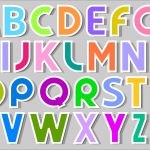Welcome to the third post in the five part series about reading and writing in children, put together for you by myself and my friend and colleague Phyllis Jordan who works specifically with children who struggle with reading. In the last post, which you can read here, we shared 8 tips for what to do if you’re worried about your child’s reading. In this post, we share 6 tips for what to do when the reading challenges have become more established and your child goes to speech and language therapy.
- Continue building phonological awareness skills like What’s the first sound in the word? What sound comes next? What’s the first word in the sentence? How many letters in the word? How many sounds in the word? And try and make this into a game.
- Alongside reading at the right level, it’s also important for your child to choose books that they’re interested in for you to read together. Think about fostering a love of print and reading- could be the menu for takeaway from their favourite restaurant- as long as they enjoy it.
- If your child is learning phonics, get graded phonics readers. This means finding out your child’s exact level e.g. are they reading Consonant-Vowel-Consonant level ( bat, cat, fat)? Then read phonics books at that level. Dandelion Books are a good option in English.
- Ask your speech and language therapist for support with phonological awareness and linking it with literacy. Things often move too fast at school and your child may need more time and help with making those connections between sounds and letters. (Phonological awareness includes being able to manipulate sounds for example, If you take cow away from cowboy, what do you get? Or what’s the first sound in fox? Or tell me three words that rhyme with bake. It’s one thing to know the names of letters and another to know the sounds each letter makes. We’re talking about languages with phonemic/alphabetic writing systems such as English, Italian etc.)
- Focus on sounds first. They can work on the letter names later.
- Once your child is experiencing some success with the early phonics, you can practice the sight words we mentioned before (words like come, does, who in English). You can weave in some phonics even with the sight words. For example, ‘we’ starts with /w/ + a tricky vowel.
That’s it for now! In our next post, we’ll share 6 tips for children ages 8 and older who are having trouble with reading.
If you like this post, please share with your friends.
Let’s get talking!
MP & Phyllis

